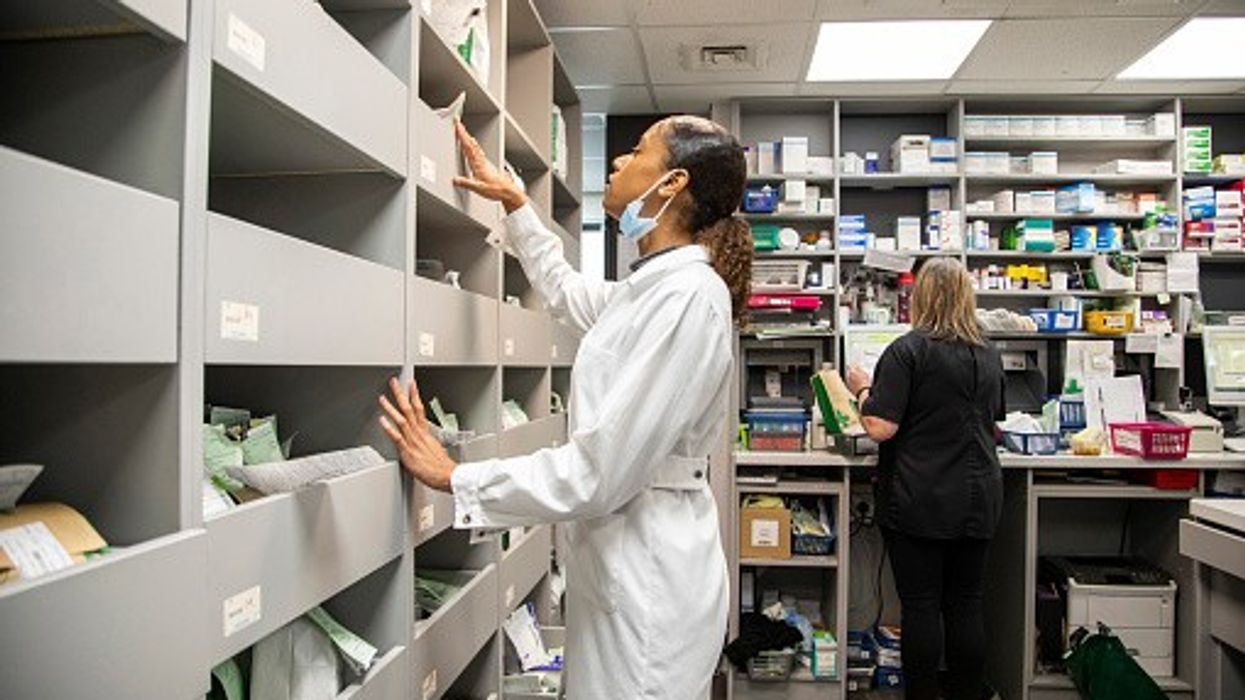Collaboration or collaborative working
Collaboration is a term we hear all the time—whether in the workplace, in community projects, or even among friends planning a holiday. But in a business context, is collaboration enough?
While working together towards a shared goal is a great start, it does not always lead to success. Enter collaborative working, a structured business discipline that transforms collaboration from a ‘good idea’ into a strategic tool for growth, efficiency, and value creation.
So, what is the difference? Collaboration simply refers to people or groups working together towards a common purpose. It can be formal or informal, structured or spontaneous, effective or ineffective. We see it everywhere—from sports teams raising funds for charity to businesses joining forces on a project, to pharmacists collaborating locally with a GP practice.
Collaborative working, however, takes this concept a step further. It is an intentional, planned, and structured approach to managing business relationships. Instead of being an ad hoc effort, it operates within a formal system, with clear policies, procedures, and strategic frameworks that guide decision-making and risk management.
Why collaboration alone is not enough
Collaboration, while valuable, has its limitations in a business setting. If you are working in collaboration with other healthcare professionals, which of these strikes a chord with you?
It can be inconsistent – Different people or organisations may interpret collaboration in different ways, leading to misalignment, inefficiencies, and even conflict.
It lacks structure – When collaboration is informal or spontaneous, it can become misdirected, risky, or ineffective.
It is not always embedded in organisational culture – Some organisational systems actively discourage collaboration, making it difficult to achieve meaningful results. (GPs vote to demand ‘immediate’ halt to pharmacy hypertension checks)
Collaborative working, on the other hand, ensures that partnerships are strategic, aligned, and mutually beneficial. It provides organisations with a common language and framework for working together, ensuring clarity on shared objectives, risk management, and performance measurement.
Key features of collaborative working
Unlike general collaboration, collaborative working is a business discipline with clear principles and structured implementation. Here are five key features that make it a game-changer:
- It is structured and supported – Businesses use formal policies, processes, and management systems to embed collaboration into their operations.
- It is resourced and sustainable – High-level buy-in, clear responsibilities, and proper resource allocation ensure that collaboration is not just a one-off effort. Can any of your pharmacy collaborations honestly say they are properly resourced and for the long term?
- It balances both hard and soft elements – While culture, values, and relationships are vital, Collaborative Working also includes structured business systems and legally binding agreements.
- It is monitored and measured – The success of Collaborative Working is evaluated through formal value creation processes, ensuring that partnerships generate additional benefits.
- It is scalable and transferable – Businesses can replicate successful collaborations, apply them to new projects, and expand their partnerships more effectively. Does your collaboration currently apply across the board or is it just for some vaccinations and maybe a sniff of hypertension finding cases?
A collaborative working model in the UK, where community pharmacists, general practitioners (GPs), and practice-based pharmacists work together, has been increasingly promoted to enhance patient care, reduce GP workload, and improve medication management.
If/When it is appropriately resourced, the below shows some of the advantages of a collaborative working model.
1. Improved Access to Healthcare: Community pharmacists provide accessible advice and treatment for minor ailments, reducing unnecessary GP appointments, including an increase in the scope of the Pharmacy First
2. Reduced GP Workload: Pharmacists take on medication reviews, repeat prescriptions, and chronic disease management (e.g., hypertension, asthma, diabetes), freeing up GP time for more complex cases.
3. Enhanced Medication Management & Safety: Pharmacists improve medication reconciliation and reduce prescribing errors. They help identify drug interactions, optimize dosages, and deprescribe unnecessary medications to prevent adverse effects.
4. Cost Savings for the NHS: Community pharmacists help reduce hospital admissions due to medication-related issues.
5. Better Chronic Disease Management: Pharmacists provide personalized medication advice and lifestyle interventions, improving patient adherence and outcomes. Patients with long-term conditions receive more consistent follow-ups and medication adjustments.
6. Improved Interprofessional Communication & Training: Regular interaction fosters better communication between GPs, pharmacists, and other healthcare professionals.
Now whilst the above may seem like a prospectus for the, as yet, unrealised contractual framework, there are issues that need resolving, other than funding, before true collaborative working can become a reality.
1.Role Confusion & Professional Boundaries: Unclear role definitions between community pharmacists, practice-based pharmacists, and GPs can lead to overlapping responsibilities.
Some GPs and pharmacists lack clarity on their respective duties, causing duplication or gaps in care.
2. Resistance to Change: Some GPs may be reluctant to delegate medication reviews or trust pharmacists with clinical decision-making. Pharmacists may struggle to integrate into GP practices due to different working cultures.
3. Communication Barriers: Poor IT system integration between community pharmacies and GP practices makes sharing patient records difficult. A lack of real-time access to patient notes can limit pharmacists' ability to make informed decisions.
4. Funding & Workforce Challenges: NHS funding for pharmacist roles within GP practices is limited, and not all GP surgeries can afford to hire a dedicated pharmacist. Recruitment and training gaps in clinical pharmacy mean that some pharmacists may lack confidence in managing complex cases.
5. Increased Workload for Pharmacists: Community pharmacists may face higher workloads without additional staffing support, affecting service quality. More clinical responsibilities require extensive training, adding pressure to already stretched pharmacy teams.
6. Variability in Service Quality: The level of collaboration varies by region, with some areas lacking sufficient integration frameworks. Without standardized protocols, patient care quality can be inconsistent.
7. Data Protection & Confidentiality Issues: Sharing patient information across GP practices and community pharmacies must comply with data protection laws (e.g., GDPR). Pharmacists may lack access to full patient records, limiting their ability to provide optimal care.
Barriers such as role confusion,funding constraints, and IT system limitations need to be addressed for a seamless integration of a collaborative working model between community pharmacists, GPs, and practice-based pharmacists.
If you would like to know more about collaboration and collaborative working, please contact Trevor at trevor.gore@icw.uk.com
Trevor Gore is an Associate Director of the Institute for Collaborative Working. He is an honorary member of the Royal Pharmaceutical Society for services to Pharmacy education.












